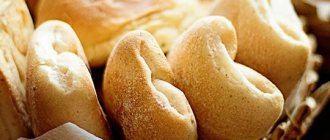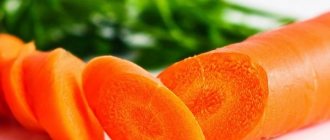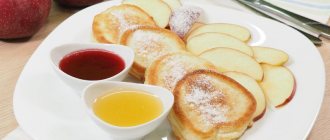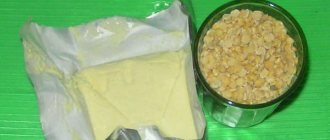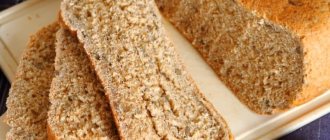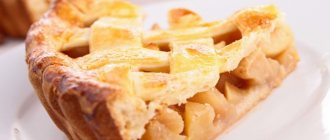Buckwheat
This is a flour that many recommend using for weight loss, despite its calorie content and high glycemic index. This is due to the fact that it contains no gluten at all, which:
- provokes severe allergic reactions;
- causes inflammation with further formation of edema and joint pain;
- and most importantly, it disrupts the functioning of the gastrointestinal tract, which forces the body to store everything that has not been digested in reserve in the form of fat depots.
Gluten is found in wheat, oatmeal, barley and rye. As a binding component, it forms dough of the required viscosity for baking. But buckwheat does not contain it, which allows it to be used in diets.
Distinctive features:
- grey colour;
- specific taste;
- the dough turns out dense and steep;
- There is only one variety, but it is produced under different brands.
Secrets of use: for baking, it is better to mix it in equal proportions with wheat.
When preparing what dietary dishes can you use:
- pancakes;
- dumplings (provided they contain low-calorie poultry);
- bread;
- pies (preferably with vegetable filling).
Considering that buckwheat flour is hypoallergenic and also lowers blood sugar (which also promotes weight loss), it is not surprising that it is considered one of the healthiest. If you are going to go on a diet, it is better to choose this for delicious baked goods.
Corn
Many believe that the healthiest flour not only for weight loss, but also for health in general is corn flour. And this opinion is not unfounded. It, like buckwheat, does not contain gluten, but is rich in vitamins A, E, group B and many microelements (iron, potassium, phosphorus, calcium, magnesium, etc.).
Distinctive features:
- There are three varieties: fine and coarse grinding, wallpaper;
- yellow or white;
- sweetish taste;
- meadow smell;
- Baking from it does not have any fluffiness.
Secrets of use: for the dishes to be successful, you must add oil. Considering the process of losing weight, it is better to give preference to olive, but not creamy. Can be mixed with wheat and rye.
When preparing what dietary dishes can you use:
- flatbreads;
- casserole;
- syrniki.
For a long time, corn flour was treated with prejudice (it is inexpensive, accessible mainly to the poor, and the baked goods are not as fluffy as we would like). But time put everything in its place. This product improves digestion, promotes the flow of bile and normalizes the functioning of the heart and blood vessels.
However, those who use glycemic diets for weight loss should take into account the high GI of this product.
What is a low-calorie substitute for flour? How to replace wheat flour?
Anyone who wants to stick to proper nutrition sooner or later faces the problem of giving up baking. And the question inevitably arises: a beautiful and healthy body or an extra piece of cake? But are all baked goods so harmful and high in calories? There is a great solution - give up wheat flour! By following the principles of proper nutrition, you can easily afford delicious baked goods; you just need to replace premium wheat flour with a healthier one. Why is wheat flour so bad?
Also read: pp menu for the week 1600 kcal.
Let's figure out what flour is. It is produced by grinding various crops, both grains (wheat, rye, rice, buckwheat, oats, corn, etc.) and legumes (for example peas). To make premium flour, only wheat grain without shell (which is rich in vitamins and oils) is used. + The advantages of premium flour are that baked goods with it are fluffy, light, tender and, of course, tasty. Since each of us has become accustomed to its taste since childhood, it is quite difficult to give it up completely and the taste of other, coarser flour at first seems unusual.
— The disadvantages of premium wheat flour are obvious. Nowadays, white flour is considered not only a useless, “empty” product, but also quite harmful. Its excess in the diet often leads to obesity, which in turn can lead to diabetes. In addition, premium flour is a “fast carbohydrate”, retains water in the body and provides extremely short-term saturation.
If it is difficult for you to completely give up wheat flour, replace it with lower grades (1st, 2nd grade) or whole grain flour from durum wheat. This flour is perfect for proper nutrition and can be used for making pasta, baked goods, confectionery, pancakes, muffins, dumplings, etc.
Let's look at the most common options for replacing wheat flour.
Buckwheat flour
Buckwheat flour is an excellent protein product containing a large number of amino acids. In addition, it contains a large amount of fiber, but the amount of fat, sugar (see the link for the text on why sugar is harmful) and carbohydrates is minimal. Buckwheat flour boasts a number of vitamins and minerals, including B vitamins, magnesium, zinc, potassium, etc.
By the way, you can prepare buckwheat flour at home by grinding buckwheat in a blender or coffee grinder.
What to cook: pancakes, dumplings, pastries, use for breading, any unsweetened dough.
Peeled rye flour
This flour is most often used for baking baked goods. This flour contains useful particles of grain shells, which are visible even to the naked eye. Thanks to this, it is rich in iron, vitamins and fiber. Rye flour has little protein, so to make bread it is mixed with wheat flour.
What to cook: rye bread.
?Oat flour
Everyone knows about the beneficial properties of oatmeal! Oatmeal also contains vitamins B, E, phosphorus, zinc and manganese. Baking made from oatmeal is considered dietary, despite its fairly high calorie content (350 kcal per 100 g), as it contains a large amount of fiber and proteins, which perfectly saturate the body. Oatmeal is an excellent substitute for wheat flour in baked goods.
By the way, you can prepare oatmeal at home by grinding oatmeal in a blender or coffee grinder (choose the least refined flakes).
What to cook: oatmeal cookies, pancakes, sweet pastries, casseroles, porridge, pancakes.
?Linseed flour
Flaxseed flour is great for proper nutrition, because it holds the record for protein content! As much as 30 grams per 100 grams of flour. It also contains a large amount of fiber and fatty acids such as Omega-3 and Omega-6. The composition of such flour is rich in folic acid, antioxidants and vitamins, which are incredibly beneficial for our body. It also helps improve bowel function.
What to cook: use as breading, substitute for eggs in dough, casseroles, buns, cheesecakes
?Corn flour
Corn flour is rich in elements such as calcium, potassium, magnesium and iron, vitamins B and PP. It is easily digestible, normalizes metabolism, and helps digestion. The most useful flour is made from durum corn. Coarse flour is used to bake bread and tortillas.
What to cook: cake, scones, pancakes, polenta, biscuits
The most common flour on supermarket shelves is Garnets flour (huge selection: oatmeal, rye, flaxseed, whole grain, corn, rice, buckwheat, pea and others).
You can also find whole grain flour from the French thing, Belovodye and other brands.
Rice
Rice flour will be especially useful for losing weight, if at the same time you need to cleanse the body and remove excess fluid from the tissues. It contains a lot of thiamine and riboflavin, and also half as much fat as, for example, wheat (if you take the highest grade). Gluten free.
Distinctive features:
- The white variety has a neutral taste and does not overwhelm other foods in dishes, but the whole grain variety has a clearly noticeable nutty note;
- no smell;
- a large amount of starch and a minimum of fiber are among its most significant disadvantages;
- makes dishes crispy.
Secrets of use: mix with other varieties in a 4:1 ratio, and also add more water.
When preparing what dietary dishes can you use:
- bread;
- flatbreads;
- bread;
- cookie;
- sauces (as a thickener).
Rice baked goods fit perfectly into oriental and cleansing diets.
A Few More Low Carb Flour Comparisons
Table: flour for low-calorie baking
Protein content per 100 g of product + % daily value:
Oatmeal - 14.7 g (20%) Wheat (whole grain) - 13.2 g (18%) Buckwheat - 12.6 g (17%) Rye - 9.8 g (13%) Corn - 6.9 g ( 8%)
Fiber content per 100 g of product:
Wheat (whole grain) - 10.7 g Buckwheat - 10 g Rye - 8 g Corn - 7.3 g Oatmeal - 6.5 g
Useful vitamins, micro- and macrominerals
(indicated only the largest amount of these substances in the product):
Wheat (whole grain) - B vitamins, beta-carotene, vitamins E, K, manganese (170% DV), selenium (112% DV), phosphorus, copper, iron, magnesium.
Buckwheat - almost the entire range of B vitamins: from B1 to B9, a rich composition of macro- and microelements: manganese (88% of the daily value), magnesium, copper, phosphorus, iron, as well as potassium, calcium, zinc.
Rye - vitamins B1, B6, B5, E, K, manganese, selenium, copper, phosphorus.
Corn - beta-carotene, vitamins B3 and B9, copper, selenium, iron, phosphorus.
Oatmeal - vitamin B1, manganese (175% daily value), phosphorus, selenium, copper, iron, magnesium.
Oatmeal
It will allow you to withstand even the most restrictive diet, as it increases the production of the joy hormone - serotonin. It blocks hunger pangs and helps overcome stress, which is often the main cause of excess weight.
Distinctive features:
- refers to products with a low percentage of starch and gluten, which makes it even more useful for weight loss;
- At the same time, it contains a lot of fat, so you shouldn’t get carried away with dishes made from it;
- makes baked goods crumbly and airy.
Secrets of use: it is better to mix it with other types of flour in a ratio of 1:3. If you have a powerful blender at home, you don’t have to buy it separately: just grind regular oats into powder.
When preparing what dietary dishes can you use:
- pancakes;
- flatbreads;
- cookie;
- pancakes.
The amino acid composition of oatmeal resembles muscle protein, so it will be most useful for those who use not only diets, but also workouts to lose weight. Contains vitamins A, E, group B, microelements, dietary fiber, fiber.
What kind of flour can be used at pp. Which flour is healthier for a balanced diet?
ProWellness
Which flour is more suitable for a balanced diet and why?
The problem of excess weight worries many, so hundreds of thousands of people around the world are reviewing their diet, trying to include only healthy foods. At the same time, there are many myths regarding the benefits and harms of certain products. In particular, it is believed that eliminating or sharply reducing the consumption of flour products and products containing flour contributes to the loss of extra pounds.
The benefits and harms of wheat flour
Experts say that it is not necessary to completely give up eating baked goods. You just need to use the “right” bread and products made from healthy types of flour.
To lose weight, you need to protect yourself from eating products made from wheat flour, because it:
- high in calories;
- has a high glycemic index;
- rich in starch.
Wheat flour is a fast carbohydrate. Because of it, water is retained in the body. As a result of consuming large amounts of flour, swelling may occur and additional kilograms may accumulate.
Attention! Those who find it difficult to immediately exclude baked goods from their diet should first give up products made from premium wheat flour. For its production, wheat grains are used, devoid of a shell rich in vitamins and natural oils. Such baked goods are less healthy than those made from 1-2 grades of flour.
The benefits of rye flour
Megavitamins – Siberian Super Natural Sport
Nutritious cocktail Coconut cookies – Yoo Go
An excellent alternative to wheat is rye flour, which contains 298 kcal per 100 grams. It’s not for nothing that for centuries bread in Rus' was baked exclusively from rye flour. It contains many vitamins and minerals necessary for the body:
- calcium;
- potassium;
- magnesium;
- phosphorus;
- vitamin E;
- many B vitamins.
Attention! Rye flour is used for baking not only bread, but also pancakes. It is added to various casseroles and used to make kvass. It can also be used to bread meat and fish dishes.
Other types of flour suitable for weight loss
In addition to rye flour, nutritionists recommend including corn, oatmeal, rice and soy flour in your diet. Since ancient times, buckwheat flour has been widely used in Rus'; very tasty pancakes and pancakes were baked from it.
These types of flour undergo minimal processing, so they retain the maximum amount of beneficial nutrients. However, they do not contain gluten. This substance causes allergies in every thousandth inhabitant of our planet. Particularly unpleasant symptoms of gluten allergy are observed in children. In addition, gluten causes increased flatulence and bloating.
The benefits of buckwheat, flax and oatmeal
Buckwheat flour contains a significant amount of amino acids, fiber and a minimal amount of fat and sugar. Oatmeal is healthy because it contains a lot of B-group vitamins and E.
Attention! By consuming baked goods and dishes made from oatmeal, you can compensate for the lack of phosphorus, zinc and manganese. They also contain significant amounts of fiber and protein. All this allows us to classify oatmeal products as dietary.
Flaxseed flour is beneficial due to its high protein content. It is high in fiber, as well as omega-3 and omega-6 fatty acids.
Intensively rejuvenating day cream – Experalta Platinum
As you can see, baking lovers who are concerned about the problem of excess weight do not need to exclude it from their diet. You just need to choose the right grade and type of flour.
Rye
To correct your figure during training, it is better to use rye flour because it contains lysine. This is an amino acid that is actively used by athletes during intense physical activity. It reduces fat stores while increasing energy expenditure. Controls the level of bad cholesterol in the blood. Stimulates lipolysis, promotes stress resistance, improves endurance.
Distinctive features:
- divided into 3 varieties: seeded, wallpaper, peeled;
- has a dark color;
- the dough turns out sticky and dense, the baked goods have a strong taste and smell, and are not beautiful to look at.
Secrets of use: it is recommended to combine with wheat flour in equal proportions.
When preparing what dietary dishes can you use: bread, any unsweetened pastries.
If you are planning to lose weight without excluding flour products from your diet, be sure to use rye flour. But at the same time, take into account contraindications to its use: a tendency to flatulence, recent surgical operations, gluten intolerance and exacerbation of gastrointestinal diseases.

